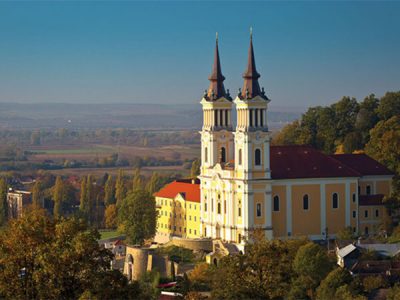The Wines of Western Romania
Romania has one of the oldest wine-making traditions in the world and its viticulture dates back more than 6,000 years. Due to suitable climate, relief and soils, viticulture became a current activity of the local inhabitants mainly in the hilly areas. Numerous local wine grape varieties have been obtained during medieval time by empirical selection, becoming representatives for Romanian wine regions.
There are several famous wine regions in Romania, one of which is the western side, ranging through the historical regions of Banat and western Transylvania. The names of Recas, Minis-Maderat, Pancota, Petrovaselo or Castel Huniade speak for themselves and have become very famous premium wines with constant European prize distinctions.
The day is about exploring the vineyards and trying the wines of Western Romania, so we will start with the region of Recas, not far away from Timisoara:
DOC RECAŞ
Located in Western Romania, in the Banat region at the border with Serbia, Recaş DOC (Designation of Origin) is the wine-growing area where, according to one of many legends, Bacchus, the God of Wine, was born. Viticulture, in this area, dates back to the Roman occupation of Banat. And in the historical documents, the Recaş Vineyard is officially mentioned for the first time in 1447. Over time, the “temptation” of the vines from Recaş DOC has “seduced” constantly the Swabian (Schwaben) population, Austrians, Hungarians, Serbs or Croats, which colonized the region precisely for its wine potential.
PETROVASELO
The same region of Recas, „seduced” this time the Italian businessman, Nello Dal Tio.
Curiously, he was lured precisely by the hills of the Petrovaselo village. The village had a population of 300 residents, many of them being Serbs. Its first mention dates from 1359, with the name of „Horvathpeturfalva” („Peter’s Village Croatia„). The legend continues, saying that from the beginning, the village had been inhabited by four families of Serbs, led by Peter and Andrew.
The vines from Petro Vaselo are biologically certified, using a „friendly” technique for soil and plants. That means no herbicides are used, but only manure and green fertilizer.
The vines are manually managed and treatments for diseases are reduced to a minimum. The same care is shown in winemaking, a reason why Petro Vaselo is a gravitational winery.
Petro Vaselo Winery’s starting point was planting vines during the 2005-2009 period. The place was chosen wisely, due to the excellent terroir elements of the Recaş DOC.
From here, we will drive up to Radna, where lies the largest pilgrimage place for the Catholics in Banat, the Bazilica Minor Maria Radna. It is a beautiful baroque basilica, filled with history and legends that brings people together, no matter what language they speak. On feast days they celebrate mass in 7 languages, having people from neighbouring countries coming as well.
After this short cultural stop, we will go on to discover the culture of wines in the county of Arad. Here we will visit a couple of local wineries, producing different varieties of wines.
MINIS-MADERAT DOC
THE WINE OF MINIS “… GIVES SPARK TO LOVE, WINGS TO THOUGHTS AND FIREPLACE WARMTH TO FRIENDSHIP”
(DR. GYÖRGY CSÁVOSSY)
Arad-vineyard, or better-known Minis vineyard is situated in a relatively narrow line in Transylvania, 20 km in eastern direction from Arad. Its excellent geological location, climate, soil (granite, diorite, and mudstone) and microclimate of River Mures is beneficial for red wine. The wine region is the south- western remnant of Transylvanian Mountain as an extension of Villány-Szekszárd line.
It is known to have been the favourite wine served at the Imperial court of Vienna.
The local vineyards try to emphasize the traditional grape varieties of the Carpathian Basin. The well-known white wines are Feteasca Regala, meaning Royal Maiden, Mustoasă de Măderat, an indigenous variety in Minis wine region and Furmint planted first in 2008. Among red wines Cadarca, Feteasca Neagra originally coming from inner-Transylvania planted first in 2007 are worthily popular. The wineries are truly proud of the historically legendary red aszú vine, called Kadarisszima, which can be made in only the best vintages. White grape varieties such as Riesling, Sauvignon Blanc, and red ones like Cabernet Franc, Blaufrankisch, Cabernet Sauvignon and Merlot are also grown and can be found often in cuvées.
In the evening we will return to Timisoara.
Early bird
registration
Deadline abstract
submission
Abstract acceptance
notification
3 Victor Babes street, ap. 3
Cluj-Napoca, Romania
+40 364 146 681
esbra@medevents.ro









